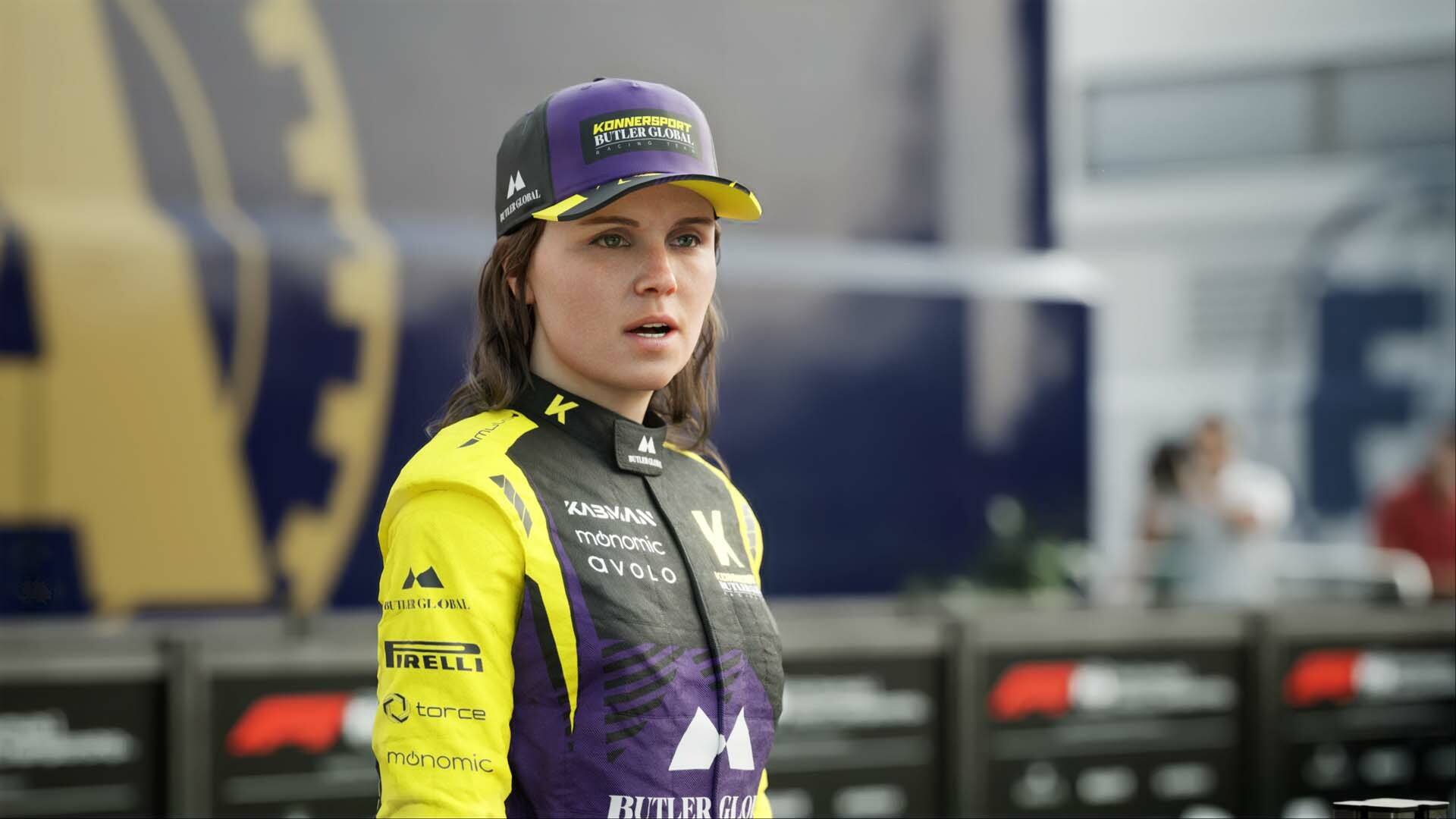
What is it? This year's official game of the Formula One World Championship, the pinnacle of motorsport.
Release date June 16, 2023
Expect to pay $70/£60
Developer Codemasters
Publisher Electronic Arts
Reviewed on NVIDIA RTX 2070, 16GB RAM, Intel Core i7-10870H
Steam Deck Unsupported
Link Official site
After the disappointingly diminutive F1 22, F1 23 has lit up the timesheet purple—essentially delivering three great F1 games in one lap. One for the Netflix generation, one for the hardcore and one for loot addicts. Yes, seriously. Add in eSports shenanigans and you might just question whether Codemasters has spread itself too thinly. Surely it can't all meet the benchmark of that impeccable career mode? Incredibly, it's very, very close.
Foremost is the return of the fictional Braking Point story, which takes pride of place at the top of the main menu. Sceptics would argue there's only so much you can do with an F1 story script because it's basically going to be about teammates colliding, maybe an old veteran training up a new driver and perhaps one cocky antagonist making jokes at your expense until you get your revenge in the final act. And yes, that's literally the synopsis of F1 21's original Braking Point. But, impressively, there's some originality here. It's properly engaging, too. You won't find spoilers in this review, but know that the cast of characters is deeper, more convincing, and elicit far greater emotional responses than before. That's helped by improved facial expressions, though any one of them could still easily be voted mayor of Uncanny Valley.
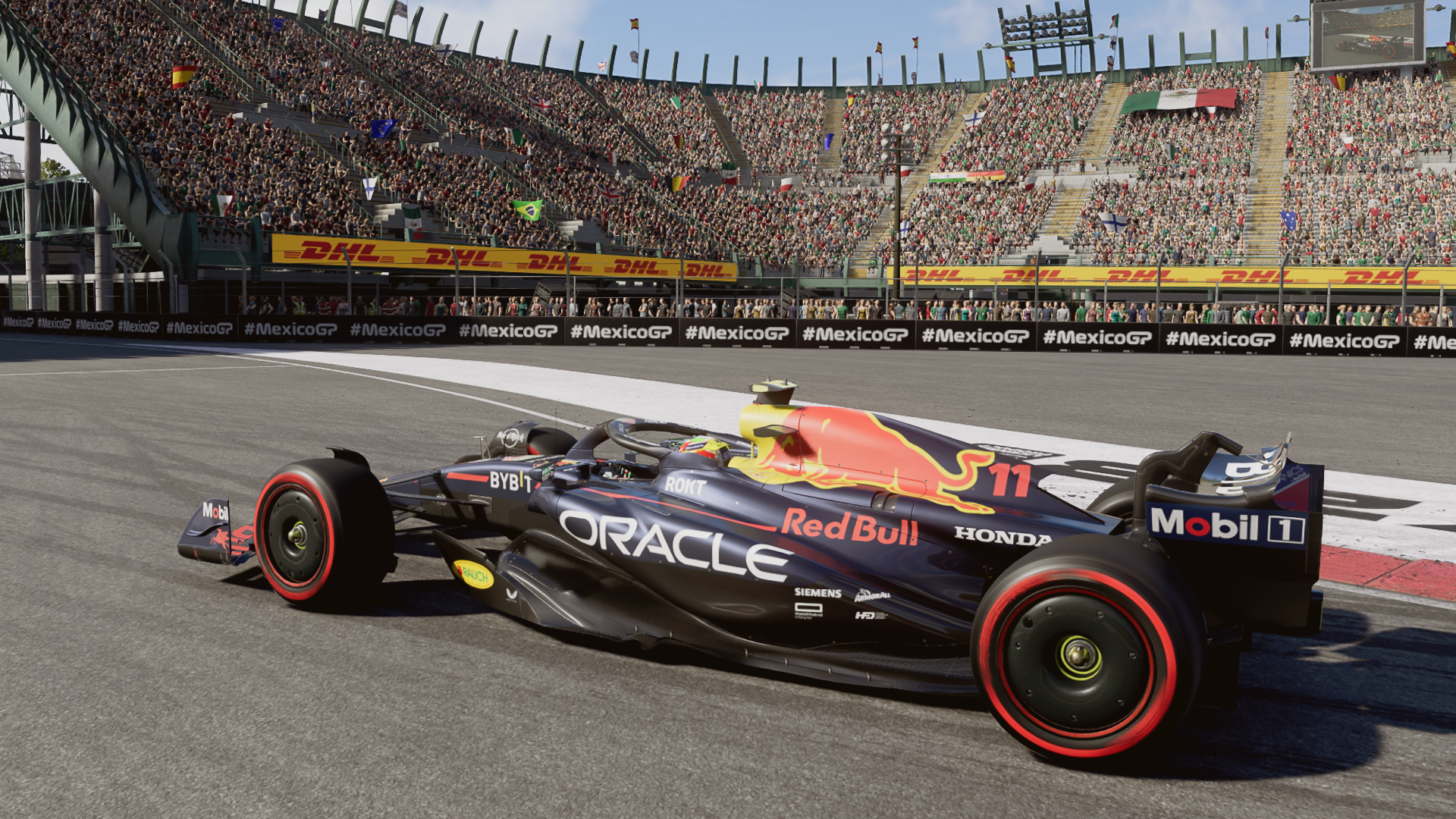
Also, being given direct control of several key characters at various points really changes your perception of them. 'Put yourself in their shoes' takes on a whole new meaning as you suddenly empathise with an apparent antagonist's plight. The writing's strong and the game translates these relationships into simple, multi-tiered race objectives well, seamlessly incorporating this fictional soap opera into the fully-licensed F1 world and the super-slick game engine.
It's also impressive how your actions and interview answers are believably reflected in the in-game social feed and newsreels, with the scripting rarely missing a notable takeaway from your results. At around 10 hours long, Braking Point 2 is arguably enough to justify the game's purchase alone, yet it's just one pillar of the experience.
Which brings us to the second pillar: career mode. Career really came alive around F1 2018 and it's been perfected by this point, allowing you to start a brand new team and either be a driver or be both driver and manager. Aside from new scenes presented by Natalie Pinkham, the career mode is largely unchanged from last year's excellent game, though you now can add three bonus tracks from the second year onwards, namely Shanghai, Paul Ricard and Algarve.

To the Max
So what's the third 'game' here? Well, it's basically (deep breath) a Fortnite-ified version of F1. That will no doubt raise a few eyebrows, but here we are with a 'Podium Pass', loot with varying degrees of rarity, and various challenges sometimes linked to the real-world calendar. It's called 'F1 World', which is funny when you take part in a Grand Prix, because then it's read as 'F1 World Grand Prix' which will have old-school N64 fans unwittingly recreate that DiCaprio pointing gif. This mode makes far more sense than last year's weird living room section, allowing you to customise a unique F1 car, as well as your avatar's clothing and your crib, then build up your tech rating from 100 to 1,000.
Here we are with a 'Podium Pass', loot with varying degrees of rarity, and various challenges sometimes linked to the real-world calendar.
Here's where it gets complicated.
Your F1 World car is essentially a blank canvas, ready to be upgraded with parts and perks. As you play, you'll win upgrades and team member contracts, which can be swapped out, boosted or just destroyed to gain stickers. The stickers are fragments of real photos you can view in the compendium screen, learning trivia about the cars, drivers and circuits, and winning even more loot by collecting a whole picture. Each upgrade or team member has a numerical value, and an average of this determines your car's tech level, which you can use to judge how hard an event is likely to be. Enter a 90-rated series with a 295-rated car and you're likely to experience what it's like to be Max Verstappen this year, winning races by over 20 seconds every time.
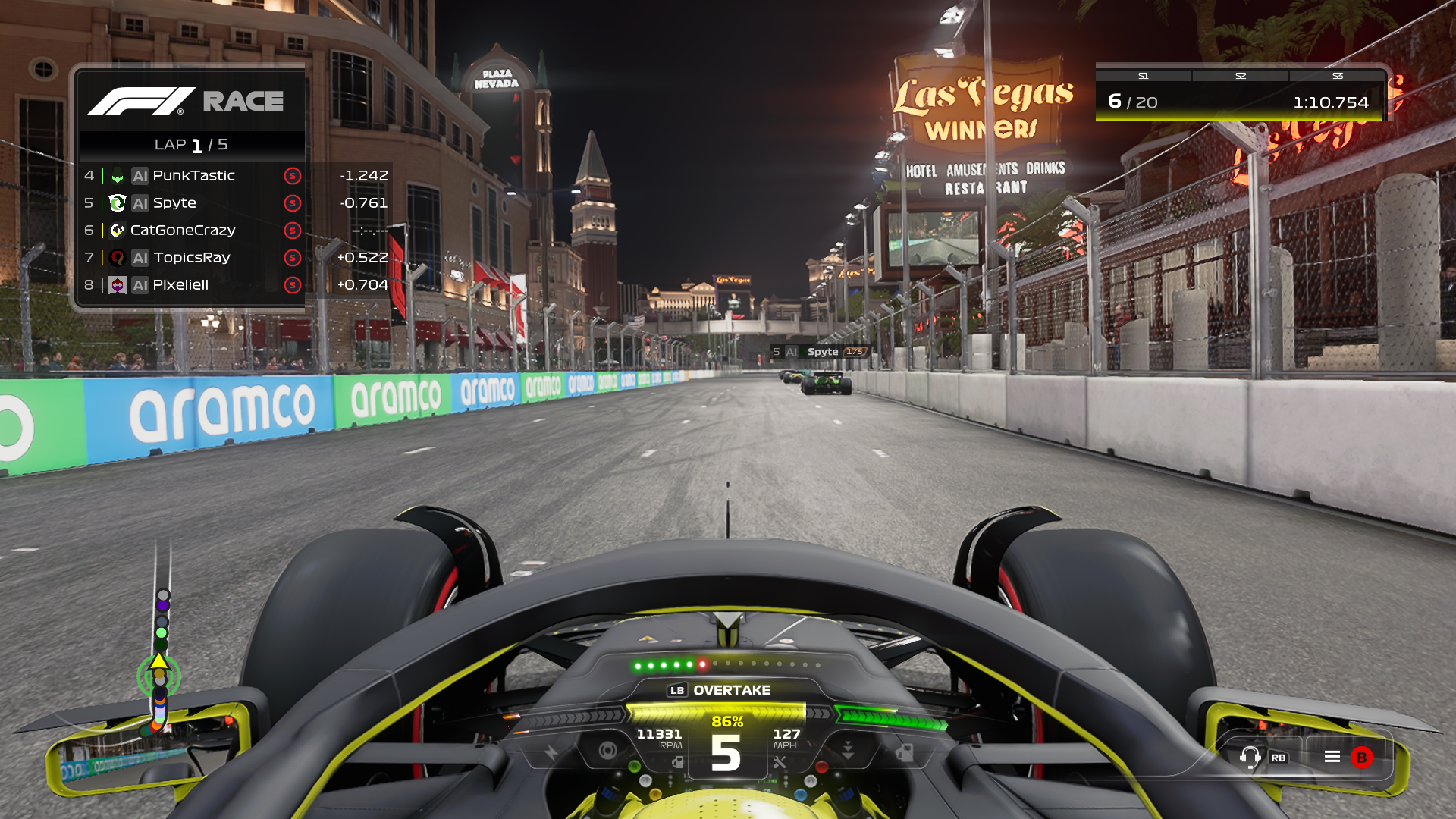
It almost works as it should, though events tend to have at least a few overpowered drivers compared to the event's rating, which means you may well do enough to pass the primary objective, but still come up short on the two bonus objectives, which is annoying. Beside all this, 'vendor objectives' let you set yourself bonus tasks like driving 50 miles on European tracks. Tick them off, collect the loot, Simple. You don't have to pay for the Podium Pass itself, though you can pay extra to speed it along and access additional items. You won't need to, but the option's there. It's also worth noting that F1 World requires an internet connection to work, so if the server's down, there'll be no progression for you.
Tally ho
Into all of this is woven into an increased emphasis on sportsmanlike driving. You start with a C rating, which (hopefully) goes to B and A as you race without hitting other drivers or incurring other penalties, such as venturing outside track limits, which is all-too easily done. Some events are even locked behind license ratings, and restarting a race doesn't delete any damage to your reputation, so you can't just keep restarting as a wrecking ball until you get a clean run.
Interestingly, lower license rankings also lower the difficulty setting, so C-licensed drivers will have their crashed car automatically reset to the track at near-enough full racing speed, and online races will even see the first lap being completely collision free, with contact detection only switched on for lap 2 onwards at one tier, which is a fantastic idea considering the first corner is always bedlam in less civilised lobbies.
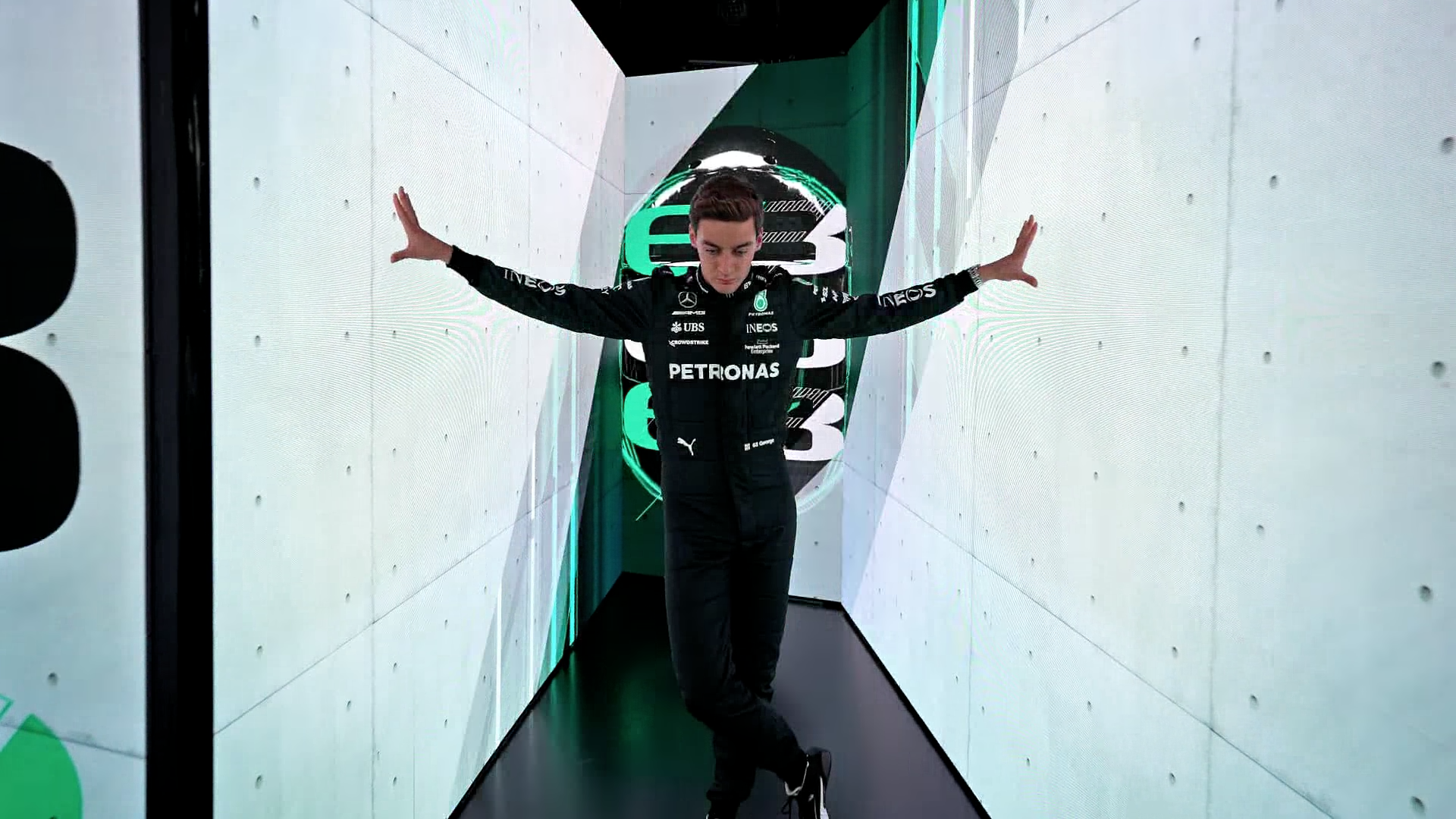
F1 World offers the most genuinely new gameplay in years, though it does feel like it's stopped short of redefining the experience—in-game it feels just like career races, only shorter. One event is even marked 'Arcade', yet doesn't offer anything obviously arcadey; it's just another race like all the others. Indeed, F1 World isn't likely to wholly convince hardcore fans, nor arguably win over anyone already invested in the lootbox shenanigans of, say, Disney Speedstorm, despite the outwardly similar DNA. F1's just too serious. Thankfully the loot-centric stuff is wholly contained within the F1 World mode, so you can mostly avoid it if the mere mention of the word 'loot' makes you nauseous. That said, if you want to play some online modes or start a driver-only Grand Prix season, those elements are unlocked by playing the first few hours of F1 World.
No diving
On the track, F1 23 is a fast, precise and technical racer, with fathoms of tactical depth. AI drivers' behaviour has been improved over last year, and while they'll still occasionally make stupid lunges like real drivers, they do now mostly refrain from turning in on you when you're passing, and even leave a car's width when alongside, as they should. Racing is closer as a result.
F1 23 is a fast, precise and technical racer, with fathoms of tactical depth.
Every couple of hours you might see an AI car skip a chicane, but mostly you'll spend your time driving carefully around the beautifully-realised real-world tracks, managing your 'overtake button' and its boost gauge, wondering whether to extend your stint on the medium tyres by an extra two laps so you know you can go full-tilt on the softs for the last 6 laps. You'll find yourself really getting into each track, learning to manage the oversteer-happy cars and how to maintain good adhesion with the track surface on the exit of smooth-surfaced corners. It's a very convincing recreation of the real sport, with all the positives and negatives that brings. Lootphobia aside, the only real criticism that can be levelled at this otherwise phenomenally well-produced game is that—like real F1—it's all a bit straight-laced.
That said, the new Las Vegas track is suitably larger-than-life and some tweaks have undoubtedly made existing tracks better, like the removal of the final chicane in Barcelona, Melbourne's new ultra-fast middle section and even this umpteenth subtly different version of Singapore.
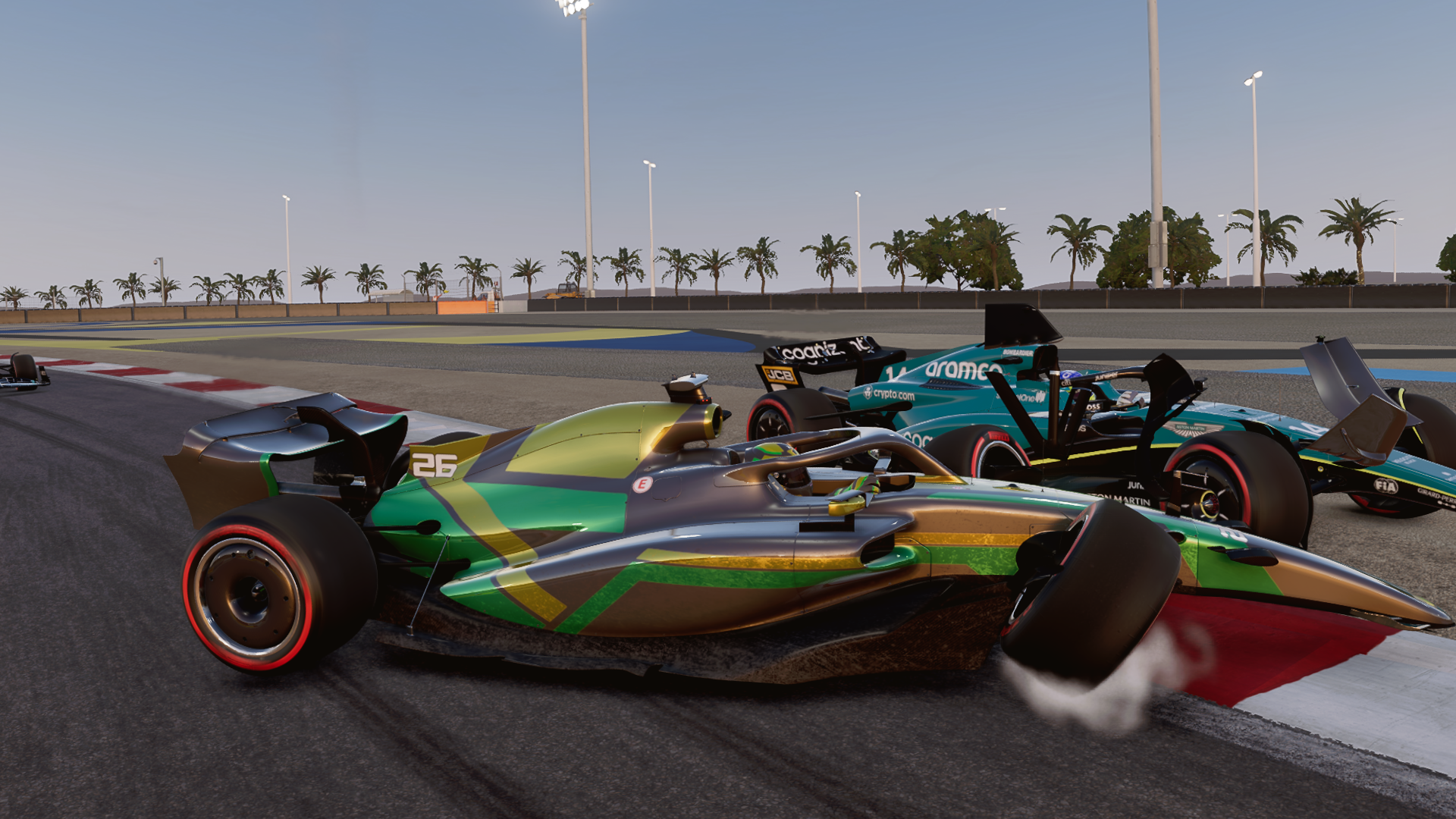
The game looks great as usual, even on High settings on a 1080p laptop running an NVIDIA RTX 2070. Performance is smooth, sharp and responsive, and is still playable on Ultra with ray-tracing enabled, though you'll need slightly beefier hardware to run that at the racers' standard 60 fps or above. Most bizarrely, however, the game simply doesn't run on Steam Deck. You can install it and start it up, but it then displays a low-fi message to say it's unsupported and that's that. You can still use Steam's Remote Play function to play via the Steam Deck, but some fuzzy visuals and occasional hitches mean you'll probably revert to your desktop very quickly. Considering F1 22 is so good on Steam Deck, the lack of compatibility here is disappointing.
F1 23 has been criticised by some for being expensive, but nobody could realistically argue it represents poor value for money. The best-in class career mode is complemented by a best-yet story, with an entirely separate progression-based economy in F1 World. Add in online ranked play, eSports championships and last year's F2 cars and you've got a simply phenomenal package. A little too po-faced at times, sure, but still phenomenal.







